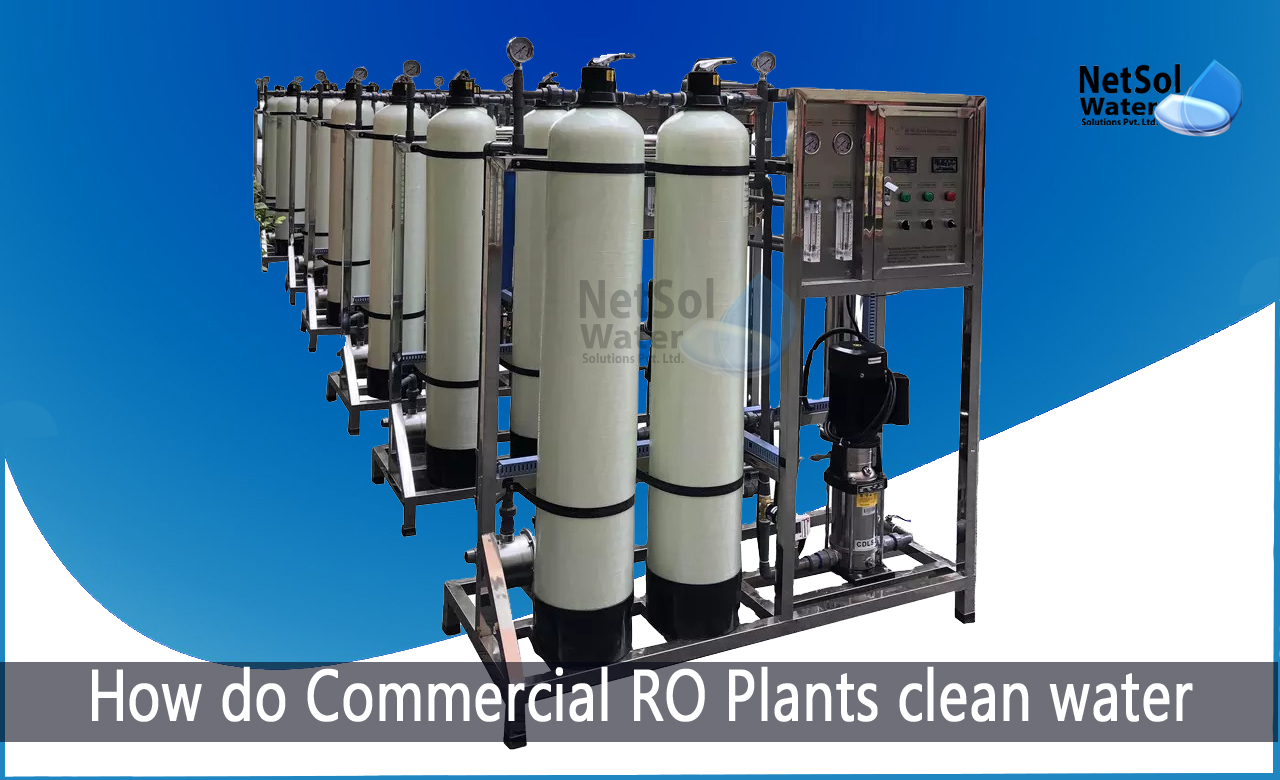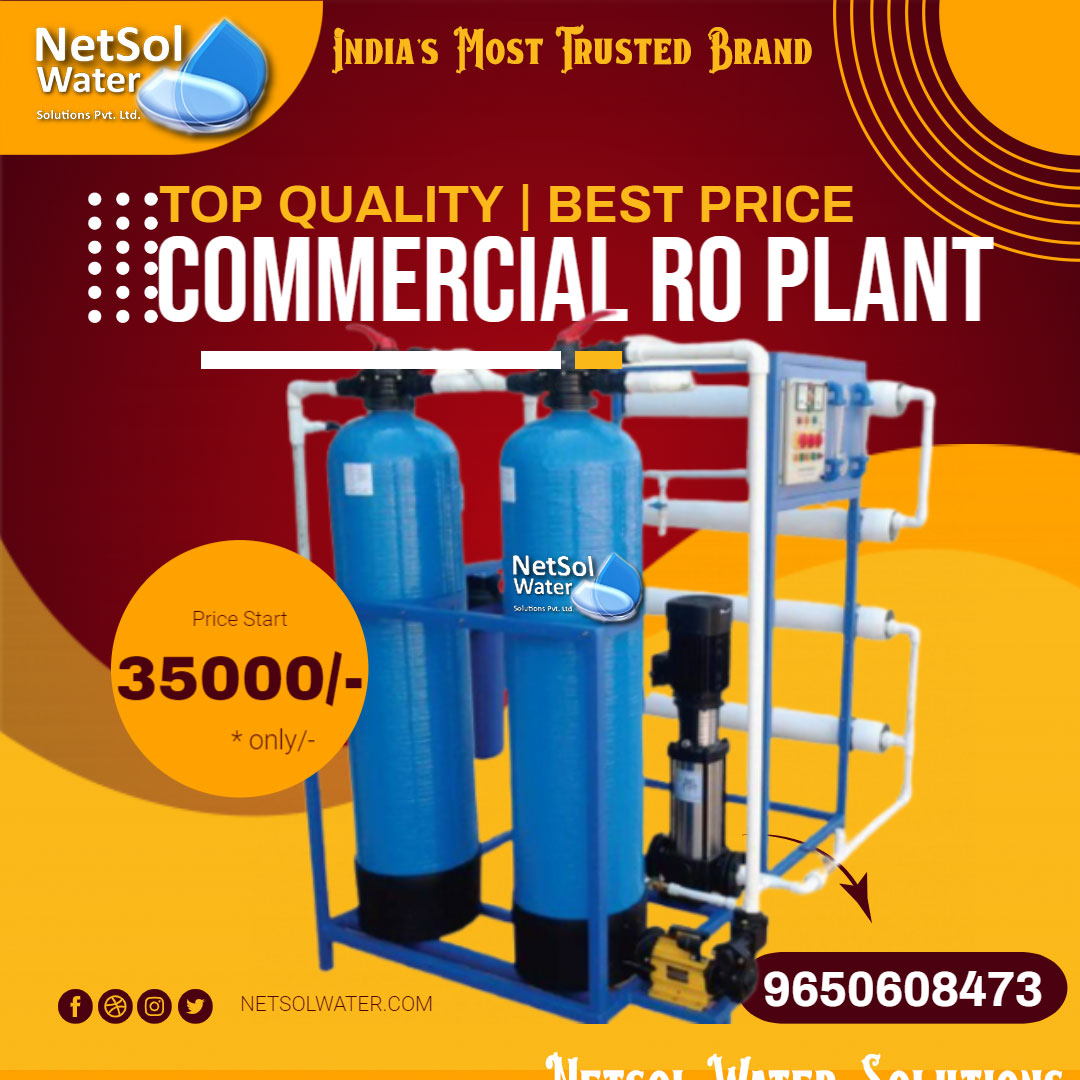Reverse osmosis is a water treatment technique that removes pollutants and contaminants from water, by exerting pressure to force water molecules through the microscopic holes of a semi-permeable membrane.
Let's learn more about how commercial reverse osmosis plants clean and purify water!
Reverse Osmosis
Reverse osmosis is a procedure that may remove up to 99 percent of different contaminants, including lead, fluoride, chlorine, dissolved salts, and more.
When water flows from the more concentrated side of the RO membrane, which has more impurities, to the less concentrated side which has less contaminants, the impurities are filtered out, leaving only clean and suitable drinking water.
How do Commercial RO Plants clean water?
The following components of Commercial RO Plants help in water purification, including
1. The cold water line valve
It is a valve that connects to the cold water supply pipe. The Commercial RO pre filter's inlet side is connected to the valve by a tube. This is where the water for the RO system comes from.
2. Pre-Filters
The cold-water supply line first supplies water to the Reverse Osmosis Pre Filter. More than one pre-filter may be used in a commercial reverse osmosis system; the most common ones are sediment and carbon filters.
By removing particles like sand, silt, and dirt that could clog the system, these pre-filters safeguard the RO membranes. Additionally, carbon filters can be used to remove chlorine to prevent further damage.
3. RO Membrane
The semi-permeable RO membrane may remove a wide variety of contaminants, including those that have an influence on aesthetics or health.
After passing through the membrane, the water is then pumped into a pressure storage tank where treated water is held.
4. Post-filter
After leaving the RO storage tank but prior to reaching the RO faucet, the treated water passes through a last "post filter." The post filter is often a carbon filter. Any remaining flavours or odours in the product water are removed, using a post-filtration "polishing" filter.
5. An automatic shut-off valve (SOV)
For water saving, the RO system has an automatic shut-off valve. When the storage tank is full, the automated shut off valve closes to stop flow to the drain, and stop any further water from penetrating the membrane.
As soon as water is drawn from the RO faucet and the pressure in the tank decreases, the shutdown valve opens to let the drinking water pass through the membrane, while the contaminated wastewater is sent down the drain.
6. Check valve
A check valve is located at the RO membrane's outflow end. The check valve prevents the passage of treated water backward from the RO storage tank. A backflow could sever the Commercial RO membrane.
7. Flow Restraint
The amount of water that flows through the RO membrane is restricted by a flow restrictor.
Maintaining the flow rate required to obtain drinking water of the greatest possible quality, is the primary goal of flow control (based on the gallon capacity of the membrane).The flow restrictor also helps to maintain pressure on the input side of the membrane.
8. Storage Tank
A standard RO storage tank can hold 2 to 4 gallons of water. A bladder within the tank keeps the water under pressure, after it has been filled.
9. Faucet
The RO unit comes with a faucet that is installed at the kitchen sink. In some regions, air gap faucets are required by plumbing rules, however non-air gap varieties are more common.
10. Sewer line
This pipe links the drain with the outlet end of the housing for the reverse osmosis membrane. Drain line tubing is used to dispose of wastewater that contains pollutants and impurities, which the reverse osmosis membrane has removed.
Conclusion
The best performance of a Commercial RO system depends on high-quality parts. This is due to the fact that RO units made with outstanding craftsmanship, premium materials, and components, ultimately offer the finest intended results—high-quality water for households and businesses.
Manufacturers of high quality Commercial RO Plants
Since, the turn of the millennium, Netsol Water has learned that the quality of the components is the key differentiator between reverse osmosis systems. Therefore, it is under our major responsibility to offer the best RO systems, including both commercial and industrial RO plants.For further information or to make a purchase.




